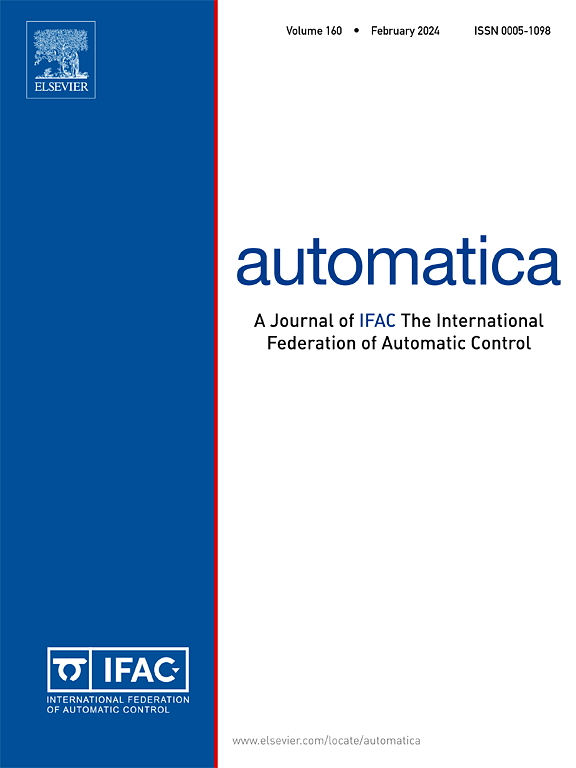Conditions for global synchronization in networks of heterogeneous Kuramoto oscillators
IF 4.8
2区 计算机科学
Q1 AUTOMATION & CONTROL SYSTEMS
引用次数: 0
Abstract
The Kuramoto model is essential for studying synchronization. In this work, we present sufficient conditions for global synchronization in networks of heterogeneous Kuramoto oscillators in the absence of homoclinic and heteroclinic cycles. The result is established by constructing a suitable Leonov function candidate for the Kuramoto model, which provides sufficient conditions for almost global synchronization in networks with acyclic and meshed topologies. The synchronization property is accompanied by necessary and sufficient conditions to guarantee the existence of equilibria, which are satisfied if the conditions for synchronization hold. The implications of the main conditions and their relationship with the network topology and parameters are discussed. Finally, the results are illustrated via a numerical example.
求助全文
约1分钟内获得全文
求助全文
来源期刊

Automatica
工程技术-工程:电子与电气
CiteScore
10.70
自引率
7.80%
发文量
617
审稿时长
5 months
期刊介绍:
Automatica is a leading archival publication in the field of systems and control. The field encompasses today a broad set of areas and topics, and is thriving not only within itself but also in terms of its impact on other fields, such as communications, computers, biology, energy and economics. Since its inception in 1963, Automatica has kept abreast with the evolution of the field over the years, and has emerged as a leading publication driving the trends in the field.
After being founded in 1963, Automatica became a journal of the International Federation of Automatic Control (IFAC) in 1969. It features a characteristic blend of theoretical and applied papers of archival, lasting value, reporting cutting edge research results by authors across the globe. It features articles in distinct categories, including regular, brief and survey papers, technical communiqués, correspondence items, as well as reviews on published books of interest to the readership. It occasionally publishes special issues on emerging new topics or established mature topics of interest to a broad audience.
Automatica solicits original high-quality contributions in all the categories listed above, and in all areas of systems and control interpreted in a broad sense and evolving constantly. They may be submitted directly to a subject editor or to the Editor-in-Chief if not sure about the subject area. Editorial procedures in place assure careful, fair, and prompt handling of all submitted articles. Accepted papers appear in the journal in the shortest time feasible given production time constraints.
 求助内容:
求助内容: 应助结果提醒方式:
应助结果提醒方式:


